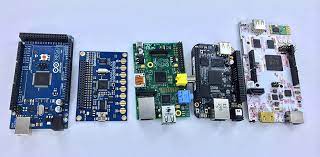Single Board Computers are small computing devices that can be used for a variety of different functions, including learning how to program, robotics and home automation, building a media player or NAS drive, and performing computing tasks such as web browsing or word processing.
Single-board computers are mostly used for embedded applications. This is because embedded computers cannot be expanded and just have the input and output capabilities they need for the task that they are purposefully designed for. A good example to explain this application is a vending machine. Most vending machines have an embedded single board computer that controls its functions. Such machines don’t have a provision to add more hardware to the computer to expand its range of capabilities.
Pros
Easy to Use
Compared to other system-on-chip computers, single-board computers are far easier to use and require very minimal training. This makes it ideal when looking to introduce it to your organization because you won’t have to worry about having to incur training costs or the staff having a difficult time using it.
Adaptable
The adaptability of single board computers is just amazing. This is because you can modify your board to suit exactly how you intend to use the computer. While this may be a disadvantage because you can’t change the modification, it is always convenient for those with no plan of changing mods.
Verified Hardware
When you compare system-on-chip computers to single-board computers, you’ll find that the system on chip computers are quite expensive to design, and there’s always the risk that it may crash, leaving you with nothing. Single-board computers, on the other hand, have verified hardware that reduces any chances of failure, which in turn makes them more reliable and worth designing.
Shorter Design Time
If you are designing a single board computer for commercial purposes, you are going to enjoy the fact that they take a shorter time to get to the market. This is because the design time is quite short. This also makes them ideal as a quick solution to an emergent problem.
Cons
Expensive
Again, when comparing single-board computers to systems on chip computers, you will notice that designing single-board computers will cost you a little more. However, when you look at the advantages that it comes with, the added cost can sometimes be worth it.
Lack of Flexibility
As mentioned earlier, single-board computers are mostly designed for embedded applications. This makes them almost useless if you’re planning on adding a few tweaks or customizations. Once the CPU and memory option are selected, you are locked into this configuration and can’t upgrade it, with the only option being a complete replacement. However, this can be an advantage if you don’t plan any hardware changes because you can set and forget it.
At the end of the day, single-board computers are always a good option if you are looking to install embedded applications. In case of any inquiries you can always consult with a professional because they will be in a better position to accurately answer your queries.
